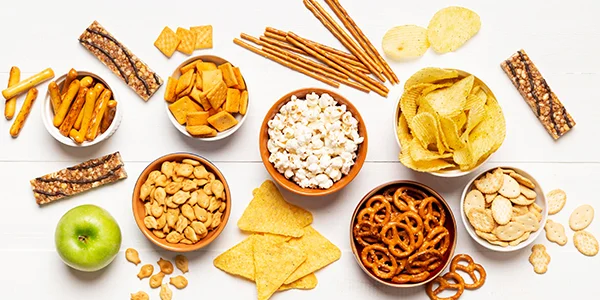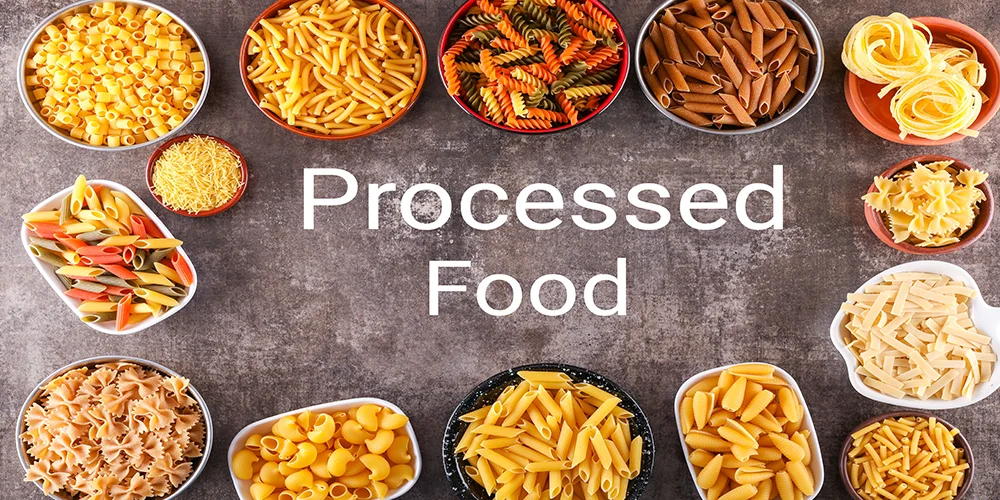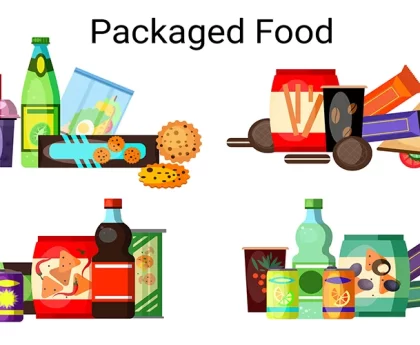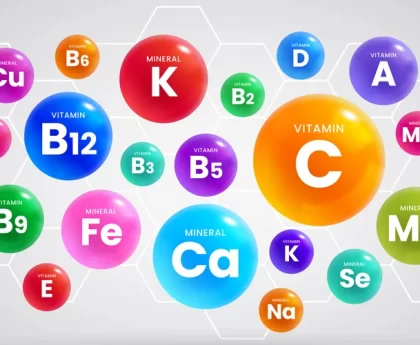Processed Foods: The Impact On Your Health refers to any food item that has undergone various mechanical, physical, chemical, or thermal processes during its preparation, with the primary goal of transforming raw ingredients into a consumable product. These processes are often employed to enhance flavor, extend shelf life, improve safety, and increase convenience. Processed foods can vary widely in terms of the extent of processing, ranging from minimally processed to heavily processed.
Minimally processed foods involve simple operations such as washing, cutting, or freezing to maintain the freshness of the food without substantially altering its natural state. Examples include pre-cut vegetables, washed and bagged salad greens, and frozen fruits.
On the other hand, heavily processed foods undergo more complex and significant transformations. They often contain numerous additional ingredients, including preservatives, flavor enhancers, sweeteners, and colorants. These foods may bear little resemblance to their original form. Examples of heavily processed foods include sugary cereals, packaged snacks, soda, and many fast-food items.
It’s important to note that not all processed foods are unhealthy, and processing can sometimes be beneficial for food safety and preservation. However, excessive consumption of heavily processed foods, which are often high in added sugars, salt, saturated fats, and artificial additives, is associated with health concerns. Therefore, it’s advisable to read food labels and make informed choices about the types and amounts of processed foods you include in your diet.
Types of Processed Foods
Processed foods can be categorized into several types based on the extent and nature of processing.
Here are some common types of processed foods:
- Minimally Processed Foods: These foods undergo minimal processing and often contain only one or a few ingredients. They are typically close to their natural state. Examples include:
– Pre-cut fruits and vegetables
– Bagged salad greens
– Freshly squeezed fruit juice - Moderately Processed Foods: These foods have undergone more processing but still retain some of their natural characteristics. They may contain a combination of ingredients. Examples include:
– Canned vegetables
– Packaged whole-grain pasta
– Plain yogurt - Heavily Processed Foods: These foods have undergone significant processing and often contain a long list of ingredients, including additives and preservatives. They may bear little resemblance to their original form. Examples include:
– Frozen pizza
– Packaged snacks like chips and cookies
– Soda and sugary beverages
– Fast food items like burgers and fries - Ultra-Processed Foods:This is a subcategory of heavily processed foods characterized by the extensive use of artificial additives, preservatives, and flavor enhancers. They often lack whole, recognizable ingredients. Examples include:
– Sugary breakfast cereals
– Microwaveable meals
– Instant noodles
– Many commercially produced baked goods - Convenience Foods: These are processed foods designed for easy and quick preparation, making them convenient for busy individuals. They may be minimally or moderately processed. Examples include:
– Instant oatmeal
– Frozen dinners
– Heat-and-eat soups and sauces - Baked Goods: These foods include a wide range of processed items made from flour, such as bread, pastries, and cakes. While they can vary in terms of processing, many commercial baked goods contain preservatives and additives.
- Canned and Jarred Foods: Foods that are preserved in cans or jars, such as canned beans, fruits, and pasta sauces, fall into this category. The canning process involves significant processing to extend shelf life.
- Dairy Products: Some dairy products, like cheese and yogurt, can be considered processed foods, especially when they have added flavors or sweeteners. Milk may also be fortified with vitamins.
It’s essential to recognize that not all processed foods are inherently unhealthy. Some minimally processed and moderately processed foods can be part of a balanced diet, providing necessary nutrients. However, heavily processed and ultra-processed foods, often high in added sugars, salt, saturated fats, and artificial additives, are associated with health concerns when consumed in excess. It’s crucial to make informed choices and prioritize whole, unprocessed or minimally processed foods for a healthier diet.

Benefits of Processed Foods
While heavily processed and ultra-processed foods are often associated with health concerns due to their high levels of added sugars, salt, saturated fats, and artificial additives, it’s important to note that not all processed foods are inherently unhealthy.
Some processed foods can offer certain benefits:
- Convenience: Processed foods are often designed for quick and easy preparation, making them convenient for busy individuals and families. This convenience can help people save time and energy when cooking or snacking.
- Extended Shelf Life: Processing techniques, such as canning, freezing, and drying, help to extend the shelf life of foods. This can reduce food waste and make it easier to store and use ingredients over a longer period.
- Food Safety: Certain processing methods, like pasteurization and canning, are used to kill harmful bacteria and pathogens in foods, reducing the risk of foodborne illnesses.
- Availability of Seasonal Ingredients: Processed foods like canned fruits and vegetables make it possible to enjoy the taste and nutritional benefits of certain foods year-round, regardless of the season.
- Nutritional Enrichment: Some processed foods are fortified with vitamins and minerals to address nutrient deficiencies in the population. For example, fortified cereals often contain added vitamins and minerals like folic acid and iron.
- Portion Control: Packaged and portion-controlled processed foods can help individuals manage their calorie intake more effectively and prevent overeating.
- Accessibility: Processed foods are often more affordable and accessible than fresh or unprocessed foods, making it possible for people with limited resources to meet their nutritional needs.
- Variety: Processed foods can introduce a wide range of flavors, textures, and cuisines to consumers, increasing culinary diversity and enjoyment.
It’s important to distinguish between minimally processed and heavily processed foods. While minimally processed foods, such as pre-cut vegetables or frozen fruits without added sugar, can be part of a healthy diet, heavily processed and ultra-processed foods, like sugary snacks and fast food, should be consumed in moderation. A balanced diet should primarily consist of whole, unprocessed or minimally processed foods, with processed options used sparingly for convenience or enjoyment. Reading food labels and being mindful of ingredients can help individuals make healthier choices within the category of processed foods.
Are processed foods safe?
The safety of processed foods depends on various factors, including the specific processing methods used, the quality of ingredients, and adherence to food safety regulations and standards.
Here are some considerations regarding the safety of processed foods:
- Food Safety Regulations: In many countries, there are strict regulations and standards in place to ensure the safety of processed foods. Government agencies, such as the Food and Drug Administration (FDA) in the United States, set guidelines for food processing, labeling, and quality control. Food manufacturers are required to comply with these regulations to ensure the safety of their products.
- Processing Methods: The safety of processed foods can vary based on the methods employed. Some processing methods, such as pasteurization and canning, are designed to kill harmful bacteria and pathogens, making the food safe for consumption. However, improper processing or handling can lead to contamination and foodborne illnesses.
- Ingredient Quality: The quality of ingredients used in processed foods is crucial to their safety. High-quality ingredients that meet safety standards reduce the risk of contamination and foodborne pathogens.
- Additives and Preservatives: Many processed foods contain additives and preservatives to enhance flavor, texture, and shelf life. These additives are generally considered safe when used within regulatory limits. However, some individuals may have sensitivities or allergies to certain additives.
- Labeling and Transparency: Food manufacturers are typically required to provide accurate labeling, including information about allergens and potential contaminants. Consumers can make informed choices by reading labels and avoiding ingredients they are allergic to or wish to limit.
- Cross-Contamination: Cross-contamination can occur during processing if equipment or facilities are not adequately cleaned and sanitized between different food production runs. Proper hygiene and sanitation practices are essential to prevent cross-contamination.
- Storage and Handling: Once processed foods leave the manufacturer, their safety also depends on how they are stored and handled by consumers. Proper storage and cooking instructions should be followed to maintain food safety.
It’s important to note that not all processed foods are equally safe. Minimally processed foods, such as pre-cut vegetables or frozen fruits without added sugar, typically have a lower risk of safety concerns compared to heavily processed and ultra-processed foods that may contain a wide range of additives and have undergone more extensive processing.
To ensure the safety of processed foods, consumers can take the following precautions:
- Follow proper food storage and cooking instructions.
- Check food labels for allergen information and potential contaminants.
- Be aware of food recalls and advisories issued by regulatory agencies.
- Practice good food hygiene and sanitation in the home kitchen.
In summary, processed foods can be safe when produced, stored, and handled correctly, but it’s essential for both food manufacturers and consumers to prioritize food safety through adherence to regulations and responsible food handling practices.

Why do we need processed food?
Processed foods serve several important purposes and play a role in modern diets for various reasons:
- Convenience: Processed foods are convenient and save time in meal preparation. In today’s fast-paced lifestyles, many people have limited time to cook from scratch. Processed foods, such as pre-cut vegetables, canned soups, and microwaveable meals, offer quick and easy options for busy individuals and families.
- Extended Shelf Life: Processing methods, such as canning, freezing, and drying, help extend the shelf life of foods. This not only reduces food waste but also allows for the availability of foods even when they are out of season. It can be particularly important in regions with harsh climates.
- Food Safety: Certain processing techniques, like pasteurization and canning, are used to kill harmful bacteria and pathogens in foods. This makes processed foods safer to consume and reduces the risk of foodborne illnesses.
- Nutritional Enrichment: Some processed foods are fortified with essential vitamins and minerals to address nutrient deficiencies in populations. For example, fortified cereals may contain added iron, folic acid, or other nutrients to improve public health.
- Accessibility: Processed foods are often more affordable and accessible than fresh or unprocessed foods. They can provide essential nutrients to people with limited resources, helping to combat food insecurity.
- Variety: Processed foods introduce a wide range of flavors, textures, and cuisines to consumers. They contribute to culinary diversity and allow individuals to enjoy foods from different cultures and regions.
- Portion Control: Packaged and portion-controlled processed foods can help individuals manage their calorie intake more effectively and prevent overeating. This can be helpful for those who are trying to maintain or lose weight.
- Ease of Transport: Processed foods are often more practical for long-distance transportation and distribution, allowing people to access a variety of foods, including those not locally produced.
- Innovation: The food processing industry continually innovates to create new products and improve existing ones. This innovation can lead to the development of healthier processed options and the reduction of unhealthy additives.
While processed foods offer many benefits, it’s crucial to make informed choices and maintain a balanced diet. Not all processed foods are created equal, and some heavily processed and ultra-processed options can be high in added sugars, salt, saturated fats, and artificial additives, which are associated with health concerns when consumed in excess. A healthy diet should primarily consist of whole, unprocessed or minimally processed foods, with processed options used in moderation for convenience or enjoyment.





